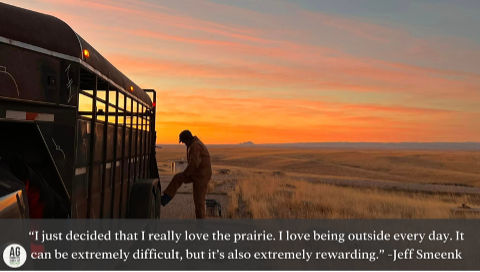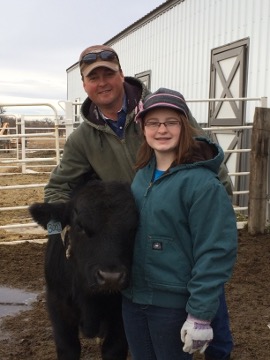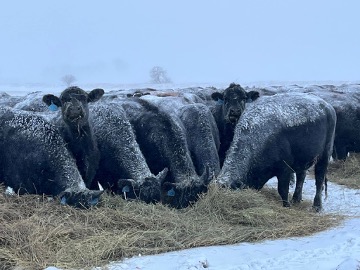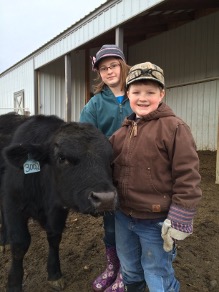Faces Behind Farm Policy: Jeff Smeenk
The 1980’s were a dark time for America’s family farmers. Commodity prices were under pressure, farm equity was wiped out as farmland values fell sharply, and farm bankruptcies soared across rural America.
It was around this time that Jeff Smeenk was headed to college. His parents warned him not to come back to agriculture. The 80s farm crisis was a pivotal moment for many farm families—and the Smeenk family was no exception.
Flash forward several decades later and you’ll find Jeff back at that very same farm.
He tried his hand at a few jobs after graduating college, but he decided that he needed to return home and keep the family operation afloat, despite the uncertainty of markets, weather, and many other factors that farmers and ranchers must contend with today.
When asked why he came back, Jeff says, “I just decided that I really love the prairie. I love being outside every day. It can be extremely difficult, but it’s also extremely rewarding.”

Jeff is the fourth generation to operate his family’s cattle ranch in western South Dakota— and he hopes to pass on the family legacy to his own children. Preservation is an integral component of the Smeenk family’s cow calf operation—regarding both the historical roots of the family business and the continuity of the natural biodiversity.

Center of the Nation Cattle Company—appropriately named for its location as the geographical center of the United States—has been owned and operated by the Smeenk family since the 1880s.
Since returning to the ranch in the mid 90s, Jeff has undoubtedly faced a plethora of difficulties that come with farm life; some transcend generational differences, and some are newer challenges due to varying factors. Mother nature can be relentless, especially in South Dakota prairies. Weather catastrophes—such as winter storms, blizzards, and droughts—are issues that have impacted the Smeenk family for decades. However, other challenges, such as regulatory and economic difficulties have changed over the years.

Jeff describes today’s impact of economic challenges, “In my grandfather’s time, you could have a couple bad years, or make some mistakes, but now, overhead is so much, and it’s just so hard economically, that if you make some mistakes, it can put you under,” which is a reality that far too many American farmers and ranchers face.
Regulatory issues are also becoming more predominant across agriculture, and the beef industry tends to get a great deal of attention. Jeff notes that there is a disconnect between producers and those implementing further regulations.
As a cow-calf operation, the Smeenk family focuses on producing high-quality Angus cattle to provide sustainable, healthy protein for America—and that is not something that Jeff takes lightly. Conservation is of utmost importance to him, and it is apparent in all aspects of their day-to-day operations, from rotational grazing practices, to preserving wildlife habitats to ensure vibrant biodiversity.
Jeff notes the biological history of the western South Dakota prairies and how he looks to the past to merge the natural biodiversity with his livestock.
He describes how he mindfully plans his range management, “Our prairies evolved with and became dependent on grazing pressures from large herds of bison, elk, and antelope just to name a few, and our cattle grazing practices emulate these ancient relationships,” ensuring that wildlife and cattle can not only cohabitate but benefit from each other.
Jeff largely prioritizes fostering biodiversity with practices such as wildlife friendly fencing, bird ramps in water tanks, and using native birds as indicator species as a way of monitoring their grazing practices. Jeff also acknowledges U.S. Department of Agriculture and U.S. Fish and Wildlife Service for “being instrumental in helping develop our grazing strategy.” Services such as “technical assistance and cost share programs have been absolutely vital in our ability to develop a conservation minded infrastructure such as water pipelines, repairs to dams, fencing, and grazing practices.”
Other conservation practices the Smeenk family utilize include rotational grazing and resting pastures for an entire year to ensure healthy, strong forage for the cattle, which benefits both the environment as well as improving the quality and quantity of feed, resulting in decreased need for supplemental feeding.
The impacts of being conservation oriented are two-fold for Jeff— both biologically and economically. He says, “if we were ruining the environment, we wouldn’t be in business,” which accurately describes the relationship between good land management and better financial returns.
Despite facing many challenges to keep the ranch in the family, Jeff notes that the family legacy aspect of their operation is what keeps him determined to make it work. When asked about his favorite memory on the ranch, Jeff recalls how much he enjoys watching his children do the same things he did growing up. He remembers both himself and his children playing in the pile of ear corn they always have around, and his kids raising bottle calves when a calf needed special attention. “The kids would raise the calves and play with them, and the calves would eventually get so tame, they would follow them all over the place,” he recalls.

His daughter and son “both love it here and want to come back and be part of our operation,” he says. Although he’s motivated to keep the family legacy going, he still encourages his kids to go experience college and other ways of life before going back home to the ranch, just as he did.
Although he admits it can be difficult to remain optimistic at times, Jeff says, “If I didn’t have a positive feeling about agricultures future, I wouldn’t encourage my kids to come back, if they desire to do so.”
Other sources of optimism come from Jeff’s fervent belief in the American beef industry and the importance of advocacy.
“I believe we raise the world's best beef and can out-produce any country in the world. If we can keep international trade fair, I believe the opportunities for expanding or even developing new exports is tremendous. We in agriculture just need to stay vigilant regarding trade and governmental issues.”